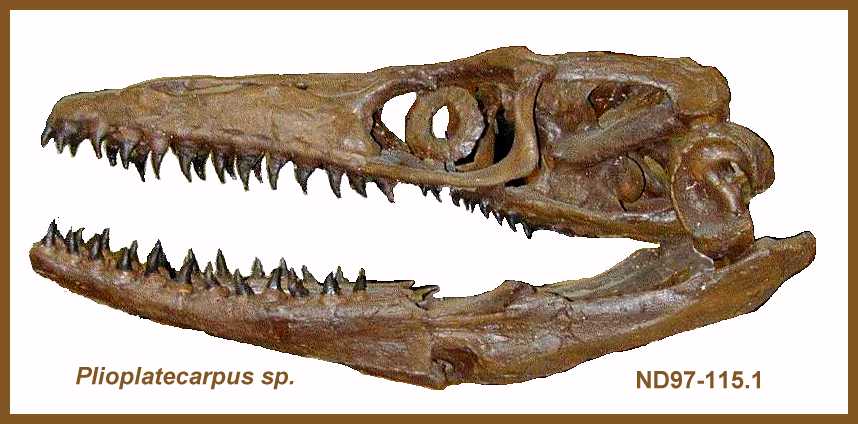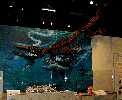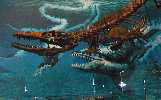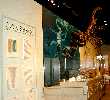 |
A New Plioplatecarpus
sp. Mosasaur from North Dakota
Copyright © 2000-2009 by Mike Everhart
Created 10/28/1999; Last updated: 09/07/2009
Adapted from a photo by John
Campbell, North Dakota Geological Survey.
Used with permission of John Campbell, Copyright
© 2000 by John Campbell and Mike Everhart |
PLIOPLATECARPUS - A NORTH DAKOTA
MOSASAUR
by John Campbell
North Dakota Geological
Survey
One of our current projects in the Paleo lab is the preparation, study and
mounting of a large Plioplatecarpus mosasaur from the Cretaceous Pierre Shale,
Griggs County, North Dakota.
The specimen was found in 1995 by two local fossil collectors, Mike Hanson and Dennis
Halvorson. Mike and Dennis had been collecting fossils for a few years and had developed a
keen interest in paleontology. This prompted them to contact John Hoganson, the
paleontologist for the North Dakota Geological
Survey. Because of earlier dealings with Dr. Hoganson, they knew that they had
an important find, when they saw the lower jaws of a mosasaur eroding out of small knoll
near the Sheyenne River.
A few days after Mike and Dennis talked with John, we headed out to check out the mosasaur
find. Neither John, nor I were expecting anything more than a partial jaw, but to our
surprise a little digging had exposed a lot more bones, and a lot more work than we were
ready for at the time. It took about 4 weeks, spread over two years to collect the
skeleton, but it was worth the effort!
The specimen is around 70% complete, missing only the flippers, pelvis, a few ribs and
parts of the tail. It is the largest Plioplatecarpus ever found, 25% bigger, than the next
biggest, (based on the quadrate) and a new
species.
The skeleton is 23 feet long, the near complete skull alone is 3 feet long. The
specimen will be on display early 2000 at the North Dakota Heritage Center in
Bismarck, North Dakota. Thanks to its donation to the state from Orville and Bev Tranby,
the owners of the land it was found on.
Mosasaurs were large marine going lizards related to the modern monitor lizards. Mosasaurs
ranged from about 3 meters long, to upwards of 12 meters. An average Plioplatecarpus
would have been about 5 meters long. If you would like to read more about mosasaurs a good
place to go is the Oceans of Kansas Web Page.
Click here to see two similar specimens
of Plioplatecarpus from Mississippi and Alabama.
Credits: Photos, drawing and text used
with permission of John Campbell, North Dakota Geological Survey. Copyright © 2000-2008 by John Campbell, NDGS and Mike Everhart,
Oceans of Kansas Paleontology.













